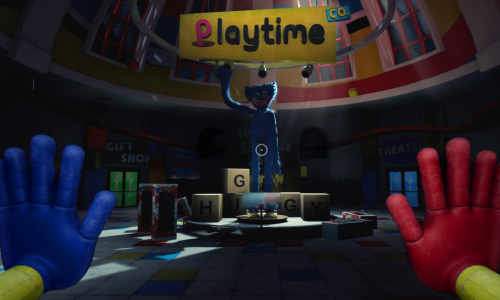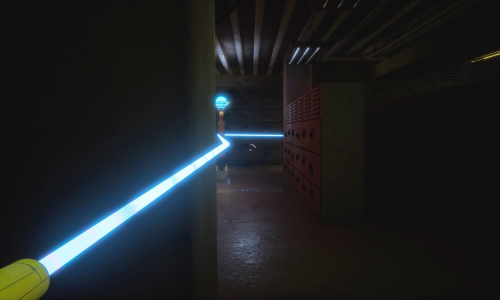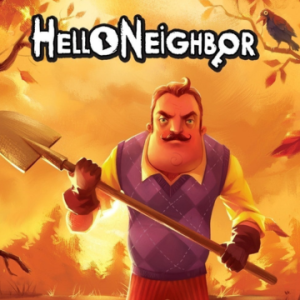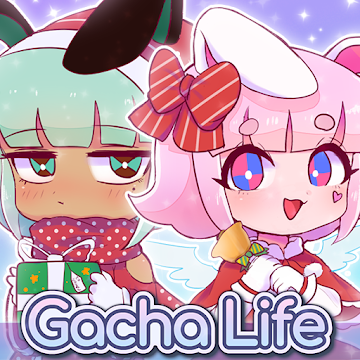Features Review
Embarking on my adventure with Poppy Playtime, I found myself immediately immersed in a world that was both alluring and eerie. From the moment I launched the game, my senses were heightened by a palpable anticipation of the mysteries waiting to be unraveled. The visual elements combined with the intricate soundscape set the stage for an experience that was as emotionally engaging as it was suspenseful. I remember the first time I stepped into the abandoned toy factory—there was a peculiar mix of nostalgia and dread that resonated deep within me, compelling me to push forward despite the uncertainty that lay ahead.
An Environment that Speaks Volumes
One of the most striking aspects of Poppy Playtime is the environment itself. The game is set in an old, derelict toy factory where every hallway and room seems to have a story of its own. I vividly recall wandering through dimly lit corridors filled with relics of a bygone era—a place where each creak of the floorboards and every distant echo rekindled the eerie allure of abandoned memories. The attention to detail in the design of the setting left me feeling as though the factory was a silent storyteller, urging me to piece together its fragmented history while cautioning me against unseen dangers.
Gameplay Mechanics that Challenge the Mind and Senses
From the gameplay perspective, Poppy Playtime has captivated me with puzzles that are ingeniously interwoven into the fabric of the story. Each puzzle seemed to be crafted with an intent to not only challenge my logical thinking but also to evoke a sense of urgency. I found myself frequently pausing to absorb every detail in an attempt to decipher the clues embedded in the environment. The mechanics encourage a blend of exploration and critical thinking, requiring me to harness both observational skills and problem-solving strategies. The tension built gradually, making every new discovery a mix of triumph and apprehension.
Atmospheric Soundscapes and Haunting Audio Effects
The sound design in Poppy Playtime played a crucial role in amplifying the overall experience. I noticed that as I navigated through the sprawling factory, the audio cues seemed to anticipate my next move, heightening the suspense at important junctures. The eerily subtle background music was punctuated by sudden, unexpected auditory events that sent shivers down my spine. In moments when silence prevailed, even the slightest whisper or shift in ambient noise appeared magnified, leaving me constantly alert and immersed in the eerie surroundings. The intricate layering of sound truly made the experience not just visual but deeply sensory.
The Artistry Behind the Animatronics
Perhaps one of the most memorable highlights for me was the character design, particularly of the animatronics that roamed the factory. Their design is both whimsical and disturbing, reflecting a juxtaposition of innocence and horror. I was fascinated by the level of craftsmanship that went into the creation of these figures, which are reminiscent of vintage toys yet imbued with a sinister life of their own. Each character seemed to move with a deliberate, almost methodical precision that contributed to an overall atmosphere of controlled chaos. The interplay of shadows and light on these figures enhanced their mystique, making every encounter an unpredictable yet compelling moment.
Engaging Puzzle Solving Interwoven with Storytelling
The narrative of Poppy Playtime is intricately linked to the puzzles I encountered. Every challenge I faced was not just a gameplay element but served as a clue to the broader story of the factory's past. I found that the puzzles offered a window into the history of the abandoned establishment, gradually revealing secrets that were both heart-wrenching and bizarre. The game excels at balancing suspense with a slow, deliberate unveiling of its backstory, ensuring that every solved puzzle felt like a significant step towards understanding the overall mystery. This seamless integration of narrative and mechanics kept me deeply invested in the unfolding drama.
Immersive Controls and Interaction Systems
Control responsiveness is another area where Poppy Playtime has impressed me. The interaction system is intuitive, allowing for smooth navigation and an immersive experience. I appreciated the way the game encouraged me to interact with every element of the environment—an abandoned toy here, a cryptic note there—which enriched my exploration and deepened the narrative. The objects I encountered seemed to possess a sense of history, each contributing to the overarching themes of the game. The ease of control made it possible for me to focus on the psychological and atmospheric nuances, rather than being hindered by clunky mechanics.
Rich Visual and Artistic Craftsmanship
The visual aesthetics of Poppy Playtime have left an indelible mark on my gaming experience. The game’s art direction is masterful, creating a striking contrast between the vibrant history of a once-thriving toy factory and the decaying remnants left behind. I was captivated by the meticulous detail in every scene—the layers of wear and tear, the retro-futuristic elements juxtaposed against modern decay, and the overall haunting allure that pervaded the environment. The color palette, predominantly subdued yet punctuated with occasional bursts of bright hues, was carefully chosen to evoke an emotional response that resonated throughout my journey in the game.
The Psychological Landscape of Fear and Curiosity
As I progressed further into the game, I realized that Poppy Playtime is as much a psychological exploration as it is a physical adventure. The constant interplay of fear and curiosity drove my actions and decisions at every turn. I found myself questioning every shadow and listening intently for every sound. The game skillfully manipulates my emotions, balancing moments of intense fear with periods of reflective quiet. This oscillation between tension and tranquility allowed me to experience a wide range of emotions, making each encounter and discovery profoundly personal. The psychological depth of the experience was, for me, both exhilarating and unnerving, reinforcing the game’s unique ability to captivate the mind.
The Layered Narrative and Implied Histories
The storytelling in Poppy Playtime does not rely on direct exposition. Instead, I had to piece together fragments of lore scattered throughout the environment, which made the experience feel like an intricate puzzle in itself. Each room, each discarded toy, and every silent corner of the factory contributed a piece to a larger narrative. I was constantly drawn into the mystery of what had happened in this place, with the game leaving subtle hints and leaving much to the imagination. This method of storytelling not only amplified the immersion but also invited me to become a detective, piecing together clues and forming theories about the fate of those who once occupied this eerie space.
Innovative Use of Lighting and Shadows
Lighting in Poppy Playtime is used not merely as an aesthetic tool but as an integral part of the gameplay experience. I noticed that every flickering light and every encroaching shadow contributed to an overarching sense of unease. The interplay of light and shadow not only accentuated the thermal ambiance of the abandoned factory but also acted as a guide through the labyrinthine passages. I found that strategic lighting often heralded important visual cues—be it a hidden door or a subtle indicator of movement in the distance. The game’s use of shadows reached beyond basic design; it became a narrative device that deeply affected my perception of safety and vulnerability within the game world.
Mood and Tone Defined by Subtle Details
Throughout my journey in Poppy Playtime, the carefully crafted mood was inescapable. It was a delicate balance of serene melancholy punctuated by moments of sudden, unanticipated tension. I was particularly impressed by the game’s ability to evoke an emotional response through small, almost imperceptible details—a toy forgotten in a corner, a faded company logo on a wall, and even the specific arrangement of broken machinery. These elements made the atmosphere feel more authentic, as if the remnants of a vibrant past were echoing through the present. Each detail, no matter how minute, played a role in sustaining an environment that was both dreamy and disquieting, drawing me deeper into its enigmatic narrative.
Fluid Transitions and Seamless World-Building
One aspect that stood out to me was the seamless manner in which the game world was presented. There were no jarring transitions or disjointed segments—everything flowed together naturally, making my exploration feel continuous and immersive. I was amazed at how the individual components of the game—the puzzles, the narrative clues, the faint sound effects, and even the background visuals—melded together to form an interconnected tapestry. Every discovery I made built upon a collective sense of progression, where the environment itself seemed alive and ever-evolving. The overall cohesion of the world-building ensured that each step I took was meaningful, reinforcing my connection to the abandoned factory and the secrets it guarded.
Dynamic Interactions with the Environment
In Poppy Playtime, interaction goes beyond mere point-and-click mechanics—it is a dynamic relationship between the player and the environment. I experienced firsthand the thrill of uncovering hidden compartments, triggering mechanical surprises, and piecing together the operational history of long-forgotten machinery. This interaction was not just about advancing the plot; it felt as if the environment was actively communicating with me, providing hints and responses unique to my actions. The dynamic nature of these interactions made every exploration session unpredictable and each discovery deeply satisfying. The game encouraged me to approach the environment with a sense of wonder and caution, knowing that every element might harbor its own story or challenge.
Emotional Engagement Through Nostalgia and Fear
As someone who has always been drawn to the interplay of nostalgia and suspense, I found Poppy Playtime to be a masterclass in evoking layered emotions. The setting—a once-joyful toy factory now steeped in mystery and decay—served as the perfect backdrop for such an experience. I felt an inexplicable pull toward the familiar yet twisted world before me, as if longing for the innocence of childhood while simultaneously grappling with its dark transformation. The game managed to evoke a bittersweet sense of longing, where every step forward was tinged with both fond memories and a cautionary awareness of the lurking threats. It is this emotional complexity that kept me engaged, allowing me to connect with the game on a deeply personal level.
Technical Brilliance and Performance Insights
The technical side of Poppy Playtime cannot be overlooked. From my experience, the game exhibits a commendable balance between high-quality graphics and smooth performance. I appreciated the meticulous design decisions that ensured the environment remained consistent, even during moments of high tension. The game runs smoothly on my system, with load times that are surprisingly short considering the rich detail present in each scene. The developers have achieved a remarkable feat by combining state-of-the-art visuals with robust gameplay dynamics, fitting together like pieces of an intricate puzzle. Not only did the technical proficiency enhance the overall immersion, but it also allowed me to focus on the story and atmosphere without interruptions.
Exploration of Theme and Symbolism in Design
The themes within Poppy Playtime are woven subtly into its very design. In my exploration, I began to notice recurring symbols and motifs—a carousel of forgotten dreams, abandoned playthings that whispered of lost innocence, and shadowy silhouettes that spoke of secrets buried in time. The game presents these elements in a manner that forces the player to question not just the narrative, but the deeper meanings behind each discovery. I found myself pondering the symbolic juxtaposition of childhood joy with the grim subsequent reality, a duality that felt both profound and unsettling. As I navigated each room and observed each relic, I became more aware of the underlying commentary on the passage of time and the persistent echoes of the past.
Immersive Narrative Driven by Discovery
The narrative thrust of Poppy Playtime is deeply intertwined with the process of discovery. Every corner I turned in the dilapidated factory led me to clues—not only about the fate of those who once populated this eerie realm but also about the intricate design of the game’s storyline. The act of piecing together the lore felt like assembling a mosaic, where every found object, every overheard snippet, added to the overall picture. I enjoyed the freedom to explore at my own pace, drawing connections between scattered hints and my own interpretations. This method of narrative delivery, where the story unfolds gradually through active participation, transformed my experience from a passive observer to an engaged detective, piecing together the remnants of a fragmented history.
Personal Reflections on the Challenge and Intrigue
Throughout my time with Poppy Playtime, I experienced a blend of personal exhilaration and heartfelt introspection. The game presented not just a series of challenges to overcome but also moments that forced me to reflect on the nature of fear, memory, and progress. Walking through abandoned corridors, confronting mechanical enigmas, and deciphering the cryptic past of the factory, I found that the game resonated with my own experiences of confronting inner fears and past memories. The entity of the factory felt almost like a mirror reflecting fragments of my own psyche—a place where every shadow, every echo, forced a confrontation with deeper emotions. It was a journey that was as much about exploring a haunted structure as it was about navigating the labyrinth of one’s inner thoughts.
Interactivity with In-Game Artifacts
Another novel aspect that I thoroughly enjoyed was the interactive design surrounding in-game artifacts. Every scrap of paper, every old photograph, and every vintage toy was treated as a vital clue that contributed to the depth of the narrative. I remember how each artifact felt like a tangible connection to a past era—a piece of a puzzle that, when assembled with others, revealed a more comprehensive picture of the factory's intricate backstory. The developers ensured that these elements were not merely decorative but played an active role in shaping the progression of the game. My interactions with these carefully placed objects enhanced my engagement and drove my curiosity to seek answers that lay hidden within the decaying walls.
Exploring the Depth of Character Interactions and Atmosphere
Despite the game centering primarily on environmental storytelling and puzzle-based challenges, the presence of animated characters and remnants of the factory’s past added a human element to the experience. I was captivated by the subtle nuances in the way static figures seemed to tell their own story. There was a silent dialogue between the remnants of the factory and my own interpretations—a conversation made through visual cues, subtle movements, and implied histories. Even in the absence of direct human interaction, the layers of detail in each room fostered a unique intimacy with the game world. This balance between impersonal eeriness and personal engagement is something that truly resonated with me as I delved deeper into the narrative.





















